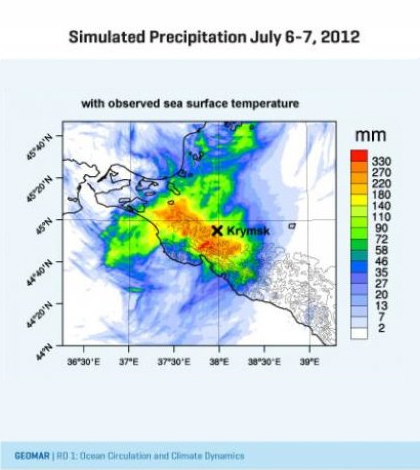Precipitation Extremes Linked To High Ocean Surface Temperatures

Simulated precipitation over 24 hours of a model using observed sea surface temperature. (Credit: GEOMAR)
The climate change driving a rise in atmospheric temperatures all over the world is also influencing the world’s hydrologic cycle. One effect of this is a rise in ocean surface temperatures, according to a recent press release from Helmholtz Centre for Ocean Research Kiel.
Researchers at the centre were curious what effects the temperature rises could have on precipitation near a region of the Black Sea and the Mediterranean that has warmed around 2 degrees Celsius since the 1980s. They used high-resolution computer simulations to study the area and found a 300 percent rise in precipitation over the period. The increase was correlated to the rise in ocean surface temperatures due to global warming.
As a result of the surface temperature rise, unusual precipitation events like the 175 millimeters of rain that fell in 12 hours in the Olympic city of Sochi could become more common, scientists say. Extreme precipitation events also caused a 2012 flash flood in the Russian town of Krymsk that killed hundreds of people. Researchers suspect that extreme precipitation events could become more frequent in the future, not just in the Black Sea and Mediterranean regions, but all over the world.
Top image: Simulated precipitation over 24 hours of a model using observed sea surface temperature. (Credit: GEOMAR)




0 comments